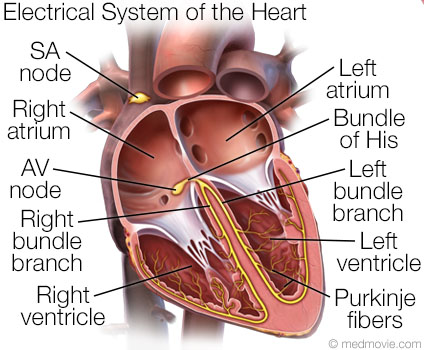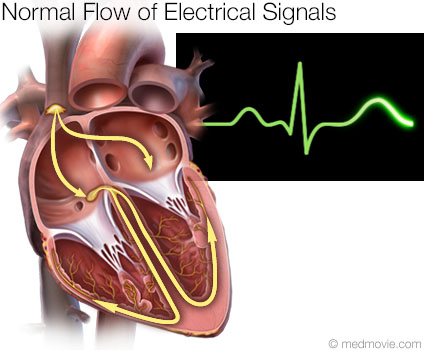
Premature Ventricular Contractions
The heartbeat is controlled by the electrical system of the heart. This system is made up of several parts that tell the muscle of the heart when to contract. The SA node starts the heartbeat, causing the atria, or upper chambers of the heart, to contract. The signal then travels through the AV node, bundle of His, bundle branches, and Purkinje fibers. This causes the ventricles, the lower chambers of the heart, to contract. The flow of electrical signals produces a normal heartbeat. Normal heartbeats can be seen in an Electrocardiogram or ECG.
In premature ventricular contractions (PVC’s), the lower chambers of the heart contract without receiving the appropriate signal from the upper chambers of the heart. This causes the ventricles to contract prematurely, which makes the contraction less effective at pumping blood. After a compensatory pause, the next beat is more effective. PVC’s can be seen on an Electrocardiogram or ECG. PVCs are common and most often occur in individuals without heart disease. They may be annoying, and can be effectively treated with medications. In some instances catheter ablation is needed to control the symptoms.
Visit Melbourne Heart Rhythm Website for more information.



